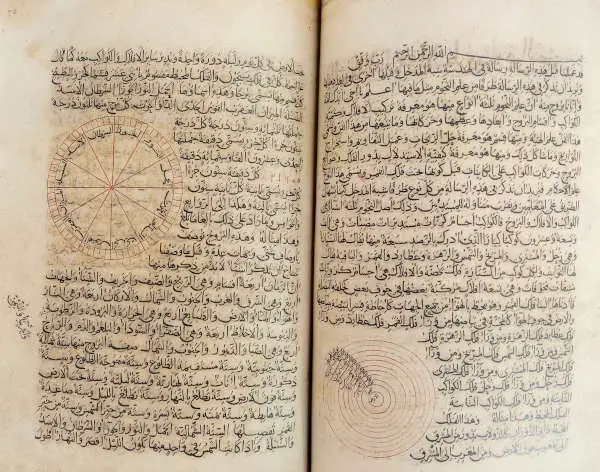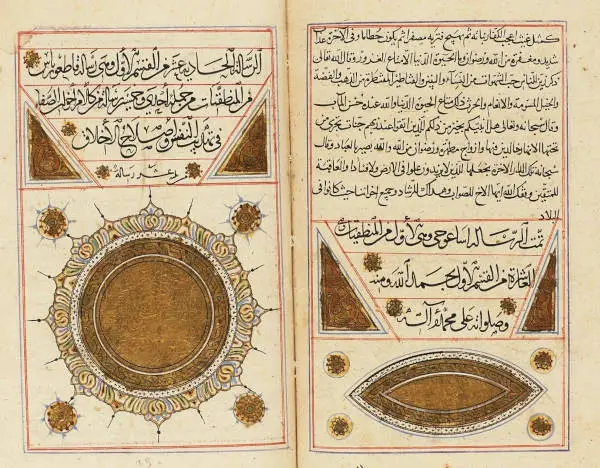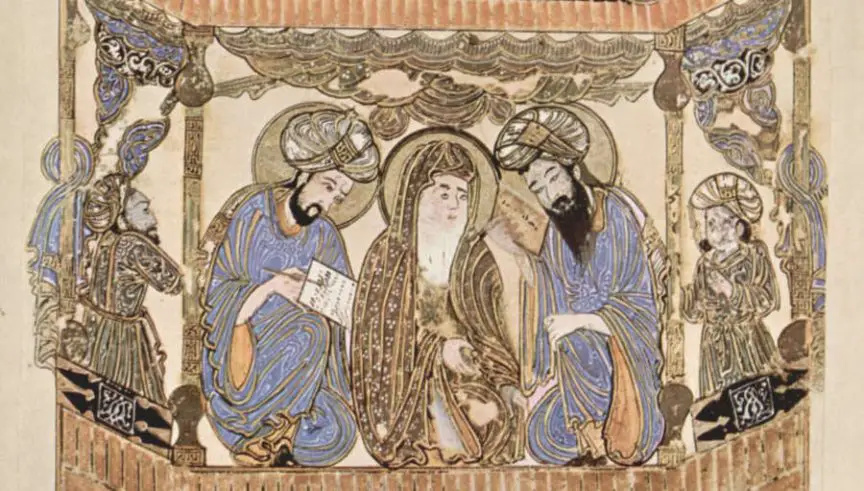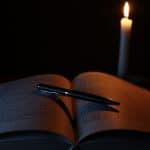The Brethren of Purity (or Ikhwān al-Ṣafā’) were a mysterious Muslim group from the Middle Ages. The latter produced an outstanding work of encyclopedia literature unique to the Muslim world and outside.
About fifty epistles make up the Encyclopedia, each describing a different branch of knowledge, arranged in such a way as to enable someone with the proper qualifications to progress from the noble sciences towards absolute understanding.
Today, the Ikhwān’s identity and whereabouts remain a matter of controversy. Iraqi authors are typically thought to have composed the content of this corpus in the tenth century, but no one knows for sure exactly who wrote it and when it was written or at what age it was published.
Introducing themselves as “brothers” (ma’âsharas), the authors discuss the importance of working together in harmony. They promise that those who read their work may gain more knowledge since it is aimed at beginners.
While these scholars held very unorthodox views, their work had a profound impact well beyond the Muslim world. Furthermore, it has become increasingly clear that their work (which sought to explain the world that surrounds us) has always positively influenced lives.
Like other Muslim philosophers of that time, the Ikhwān al-Ṣafā’ sought to reconcile “traditional science” with “intellectual science.” Science viewed as belonging to the Qur’anic tradition is known as ‘Traditional Sciences. In medieval Islam, the intellectual sciences were those available to any human being (like mathematics, logic, and metaphysics), originating from the past civilizations, including Ancient Greece, Egypt, Babylon, Iran, and India.
The Classification of Knowledge
The Brethren Encyclopedia stands out because it focuses on esoteric subjects and its authors tend to favor sciences that are considered occult by people today.
From the ‘on the scientific arts’ section of Epistle 7 of the Ikhwān discourse, it is already evident how knowledge may be classified. The sciences are divided into three categories: “propaedeutic sciences” (sciences created for human happiness in the world) comes first before the other two groups of sciences whose mission is to reinforce human happiness in the next world—the religious and philosophical sciences.
Then again, as the Ikhwān defines them, each of the three groups comprises sciences or arts of an esoteric nature:
- Propaedeutics consists of occultism, magic, enchantments, and alchemy.
- Religious sciences contain a section devoted explicitly to “the science of dream interpretation.”
- In the section on philosophical sciences, there is a section on angelology.
According to Pierre Lory, Brethren’s three specific categories, as conceived and practiced during the Islamic Middle Ages, are remarkably similar to the three aspects of occult sciences during that period.
Related Reading: Magic in Islam During Middle Ages – Opens in new tab

First, we find the mainstream utility of magic designed to satisfy a man and assure him of wealth and health. Sacred practices, such as dream interpretation, are also beneficial to religious life. These practices are legitimized in Islam through hadith and passages in the Qur’ān, for example, the story of Joseph in Egypt.
Nevertheless, “the great magic,” the one most crucial postulation by the Brethren, is that which leads a person to his “true” self. In the last portion of the corpus, Epistle 52, we see that magic plays a crucial role in the Ikhwān’s tradition. Further, the authors of this treatise explicitly mention that magic, and perhaps the other esoteric sciences, are of importance to philosophy, and are the culmination of prior sciences since the preceding sciences must be learned before this.”
At least two different versions of this treatise appear to have circulated in the manuscript, which has recently been more complex than initially believed. Its latest shortest version bears the following title:
“On the quiddity of magic: incantations, the evil eye, incitements given to animals, intuition, and spells.”
A student of that era was expected to be knowledgeable about most of these topics. The Brethren’s philosophical views are presented in the Rasa’il (in some shape or form), which generally increase in abstractness. The soul, to them, represents an emanation, a fragment of the universe that will return to it after death.
Consequently, the universal soul will unite with Allah at Doomsday. By transmitting this kind of knowledge, the epistles aim to facilitate happiness and harmony with the universe.
Related Reading: “Medieval Witch Trials in Europe”– Opens in new tab
Fables
Like most Islamic works, the Epistles contain many Arabic Qur’anic quotations. There are also some didactic fables in the Encyclopedia.
Among the most famous fables is 70 shipwrecked men who discover an island ruled by animals and settle there. Having suffered brutal treatment from humans, the animals complained to their Djinn King.
The King presides over debates between humans and animals, including the jackal, the nightingale, the bee, and more. After the series, an Arabian character explains that humans are superior because they have eternal life given by Allah.
The King responds by ruling in their favor but reminds them of hellfire Quranic predictions if they mistreat animals.

Cycles and Revolutions
The authors devote a great deal of attention in their Encyclopedia to astrology, which is closely related to magic. There is an extensive section on astronomical cycles, for example, and an entire chapter on “Revolutions and Cycles.” In Epistle 36, the authors discuss the effects of celestial events on the world and draw a list of the events.
They discuss everything from the evolution of worms and bugs to the emergence of religions and dynasties, the replacement of men on the throne, and the development of oceans and continents across the Earth. It appears that nothing is untouched by their ideas in this world of coming into being and leaving behind.
It is claimed in the corpus that the world’s history consists of a series of seven-millennium cycles of 7,000 years each. A prophet is said to herald every millennium.
It is interesting to note that Muhammad is not generally considered the last prophet, but rather the sixth, after Adam, Noah, Abraham, Moses, and Jesus. According to the Brethren, number seven is called the “Qā’im of Resurrection.” He is the Mahdi, the one who will appear at the end of time and unveil the esoteric portions of the revelations to individuals and all humanity.
Such a theory was unacceptable to many readers, and the authors may have published anonymously to avoid backlash.
Do you want to learn more about Magick? Check out our recommendations at “Magick Bookshelf” and many free resources at our “Free Magick Library“
Resources
- Course, Magic in the Middle Ages by Universitat De Barcelona from Coursera
- Ikhwan al-Safa’ – muslimphilosophy.com
- Ikhwan al-Safa’ – Internet Encyclopedia of Philosophy
- The Rasail Ikhwan as-Safa – ismaili.net
♦ If this article resonates with you, please join our newsletter by using the forms on this website so we can stay in touch.
Stay in Touch
 Join our newsletter by using the forms on this website or click here!
Join our newsletter by using the forms on this website or click here! Follow us on Google News
Follow us on Google News Follow us on Facebook
Follow us on Facebook
Featured image by Irakischer Maler von 1287(part) – Bibliothek der Süleymaniye-Moschee







